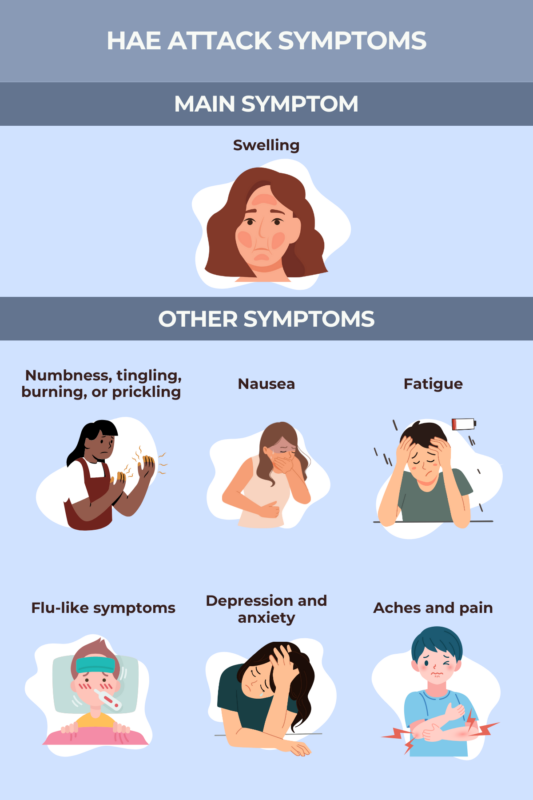FAQs about how to treat and manage HAE attacks
Not all hereditary angioedema swelling attacks pose serious health risks, but such attacks can be life-threatening, especially if the swelling occurs in the throat and impairs a person’s ability to breathe.
While many hereditary angioedema (HAE) attacks develop without any known trigger, emotional and physical stress, such as injury or infection, can trigger attacks in HAE. Taking steps in daily life to avoid these triggers may be an important part of managing HAE symptoms.
The main symptom of a hereditary angioedema (HAE) attack is swelling, which can affect the hands, feet, limbs, abdomen, genitals, face, and/or neck. Many people with HAE also experience other symptoms related to attacks such as numbness or tingling, nausea, flu-like symptoms, fatigue, headache, or pain.
A hereditary angioedema attack that causes swelling around the neck or throat can cut off a patient’s ability to breathe, which may be a life-threatening situation. Emergency medical help should be sought immediately if patients have swelling around the neck.
Related Articles

 Fact-checked by
Fact-checked by 








